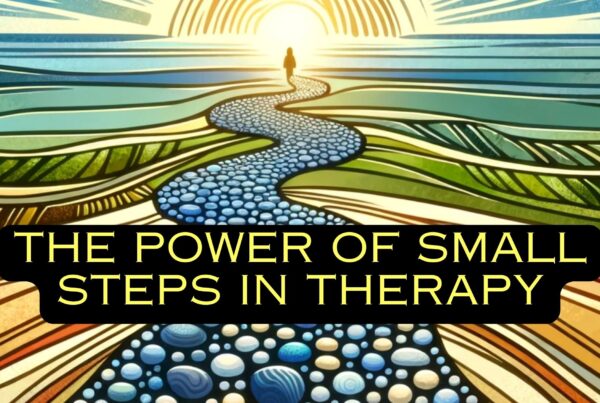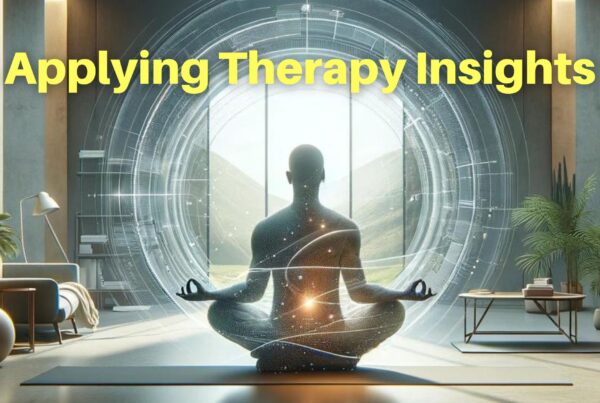How to Use the Z Model to Gain Clarity on Decision Making
Life’s journey is punctuated by myriad decisions. From the minute to the monumental, these choices define paths, mold futures, and shape identities. But amidst life’s cacophony, how does one ensure clarity in decision making? Enter the Z Model – a tool often introduced in therapeutic settings to provide clients with a structured approach to understanding their decisions. By merging insights from hypnotherapy and Acceptance and Commitment Therapy (ACT) with the Z Model, a powerful synergy can be harnessed.
Understanding the Z Model’s Foundations
Originally rooted in the Myers-Briggs Type Indicator (MBTI), the Z Model was developed to help individuals understand their preferred decision-making style. This model integrates both sensing and intuition (collecting information) and thinking and feeling (evaluating the information). A balanced approach to decision-making emerges when all four processes are used, a balance which many seek in their life decisions.
In the world of hypnotherapy, this model is not unfamiliar. Clients are guided to access their subconscious mind, a realm where deeply entrenched patterns of decision-making reside. By tapping into this space, insights about personal decision-making styles emerge. Clients often discover that they lean heavily towards either intuition or sensing, or perhaps thinking over feeling. By identifying these inclinations, the first step towards a more balanced decision-making process is taken.
Step-by-Step Application of the Z Model
Embarking on the path to more informed decision-making using the Z Model might initially seem daunting. However, once its structure is understood and its steps internalized, it becomes an invaluable ally in navigating life’s crossroads. Let’s delve into a step-by-step exploration of how to employ this model.
1. Information Gathering – Sensing:
The first phase revolves around collecting tangible, concrete information. This is the data-driven step, where facts, details, and realities are taken into account. Questions like “What do I know?”, “What can be seen or measured?” or “What have I experienced before in similar situations?” are pondered upon. Information collected in this stage is based on present realities and past experiences.
2. Information Gathering – Intuition:
While sensing relies on the concrete, intuition delves into the abstract. Here, individuals look beyond the immediate facts. Imagination, insights, and possibilities are explored. “What could be the implications?”, “What patterns do I see?”, or “How might things evolve in the future?” are questions that guide this phase. By tapping into intuition, one explores uncharted territories and potential scenarios.
3. Evaluation – Thinking:
Once all information is gathered, it’s time to evaluate it logically and objectively. Pros and cons are weighed, and potential outcomes of each decision are considered. This step is about removing emotions from the equation and looking at decisions from a purely rational perspective.
4. Evaluation – Feeling:
In contrast to the logical evaluation, this step brings emotions to the forefront. Here, personal values, emotional responses, and the potential impact of decisions on oneself and others are evaluated. Questions like “How does this decision align with my values?”, “How would it make me feel?”, and “How would it affect those around me?” are pondered.
After journeying through each of these steps, a holistic view of the decision at hand emerges. By considering both tangible information and intuitive insights, and by weighing both logical implications and emotional impacts, decisions made using the Z Model stand on a foundation of thoroughness and balance.
Incorporating ACT with the Z Model
Acceptance and Commitment Therapy focuses on acceptance of emotions and commitment to value-driven actions. When combined with the Z Model, this therapeutic approach amplifies the decision-making process. It encourages individuals to accept the emotions tied to their decisions without judgment. By doing so, a clearer, more authentic understanding of the choices at hand is revealed.
Once this emotional clarity is achieved, the Z Model’s structural approach can be introduced. For instance, if a client realizes through ACT that they often make decisions based purely on emotion (feeling), they can be encouraged to also tap into their thinking process. This holistic approach ensures that decisions are not made on impulse but are carefully considered from all angles.
The Role of Hypnotherapy in Enhancing the Z Model
Hypnotherapy, with its transformative power to access the subconscious, can be a crucial ally in integrating the Z Model into one’s life. While in a relaxed trance state, individuals can be guided to visualize scenarios where they employ the Z Model in their decision-making. Through repeated visualization, this balanced approach can become second nature.
Moreover, any barriers to balanced decision-making, often hidden in the subconscious, can be identified during hypnotherapy. Maybe there’s a deep-seated fear of trusting one’s intuition or an over-reliance on logical thinking due to past experiences. Once these barriers are brought to light, they can be addressed, paving the way for the effective use of the Z Model.
Embracing the Z Model for a Fulfilling Life
Every decision, big or small, contributes to the tapestry of life. When decisions are made with clarity and confidence, the fabric of this tapestry becomes richer and more harmonious. The Z Model, especially when combined with the techniques of hypnotherapy and ACT, offers individuals a robust framework to achieve this clarity.
Remember, the journey of life is not about avoiding decisions out of fear or uncertainty. It’s about embracing each choice as an opportunity for growth. By using the Z Model as a compass, navigating the maze of decisions becomes not just simpler, but also more meaningful. Through its structured approach, individuals are empowered to take the reins of their life, leading them to a future crafted by well-balanced and insightful decisions.
A Model To Help Offer Clarity
By following this step-by-step guide, one can ensure that the decision-making process is comprehensive, taking into account a wide spectrum of information and emotions. This, in turn, leads to choices that are more aligned with both external realities and internal values.
Release Hypnosis Melbourne Hypnotherapy
Since 2016, Lawrence Akers has been working under the name Release Hypnosis offering Hypnotherapy and ACT based work to the people of Melbourne or an online service. Based on St Kilda Rd, Release Hypnosis is an easy and convenient location to get to and accessible by the ANZAC station train and tram stop. Release Hypnosis can help with a wide range of presenting issues, and I offer a free 30 minute no obligation discovery call for those who are unsure if hypnotherapy is the right way forward for them.
Book Your FREE 30 Minute Consultation With Release Hypnosis NOW!
You may also like to read:
Discovering Purpose and Values: A Path to Mental Well-being
Can’t Visualise in Hypnosis? Here’s What You Can Do Instead.
Dealing with Financial Stress and Crisis: Finding Peace Amid Turbulence
What Is The Success Rate of Hypnosis?








